After the end of World War 2, one of the main tasks was to clear the urban areas of ruin and start rebuilding Europe—Germany in particular, where the damage was extensive. Allied bombing had laid to waste nearly every German city, town and village, destroying millions of homes, public buildings, schools, factories, as well as centuries-old cathedrals, mediaeval houses and other historic structures. It is estimated that the war produced over 400 million cubic meters of rubble that needed to be cleared before any reconstruction plan could be undertaken. This herculean task fell upon the German women, because a large percentage of the men were already dead or were prisoners of the war. These women were called Trümmerfrauen, or “rubble women”.
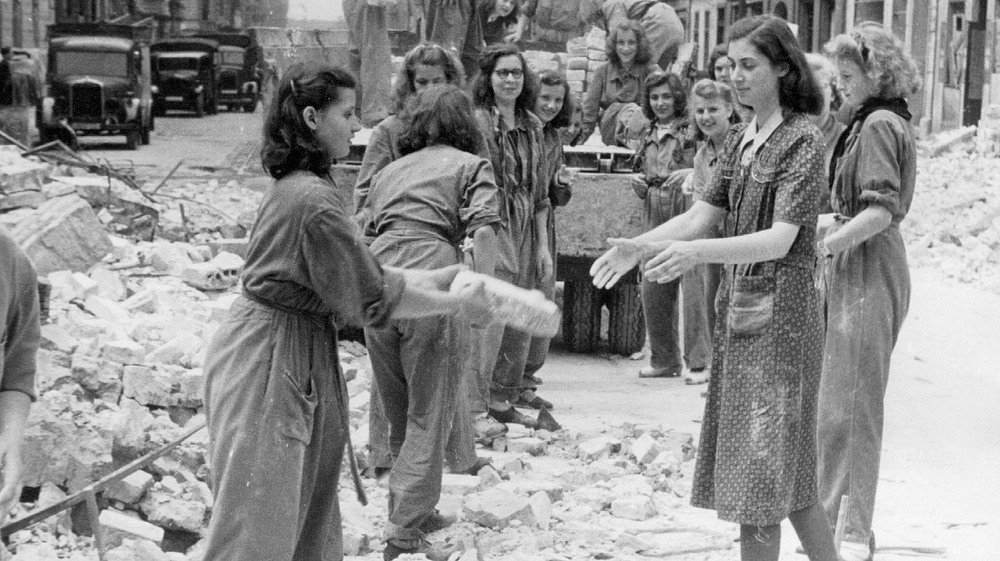
The task of removing the ruins were assigned to private enterprises, who in turn employed the women. The main work was to tear down those parts of buildings that had survived the bombings, but were unsafe and unsuitable for reconstruction. Using sledge-hammers, picks, buckets and hand-winches, each ruin was torn down and the rubble demolished further down to the bricks so that they could be reused later in rebuilding. A chain of women would transfer the bricks to the street, where they were cleaned and stacked. Wood and steel beams, fireplaces, wash basins, toilets, pipes and other household items were collected to be reused. The remaining debris was then removed by barrows, wagons and lorries. Many of debris these were used to fill up bomb craters and trenches. Others were piled up to form hillocks known as schuttberge, or debris mountains.
Related: Ruhr’s Slag Heap Tourism
These images of rubble women carrying bricks and wrangled pieces of steel with their bare hands became the symbol of the German people’s unwavering spirit, their courage, and their desire to rebuild their nation.
However, recent research by German historians has shown that not all rubble women were volunteers—selfless housewives in service to the nation, but Nazi functionaries who were forced to work by the Allies. Others were driven to the mountains of rubble by unemployment and hunger. In the university in Freiburg, students were required to clear rubble in order to be allowed to register for their studies. So while many women took part in rubble clearing they did not do it for altruistic reasons.
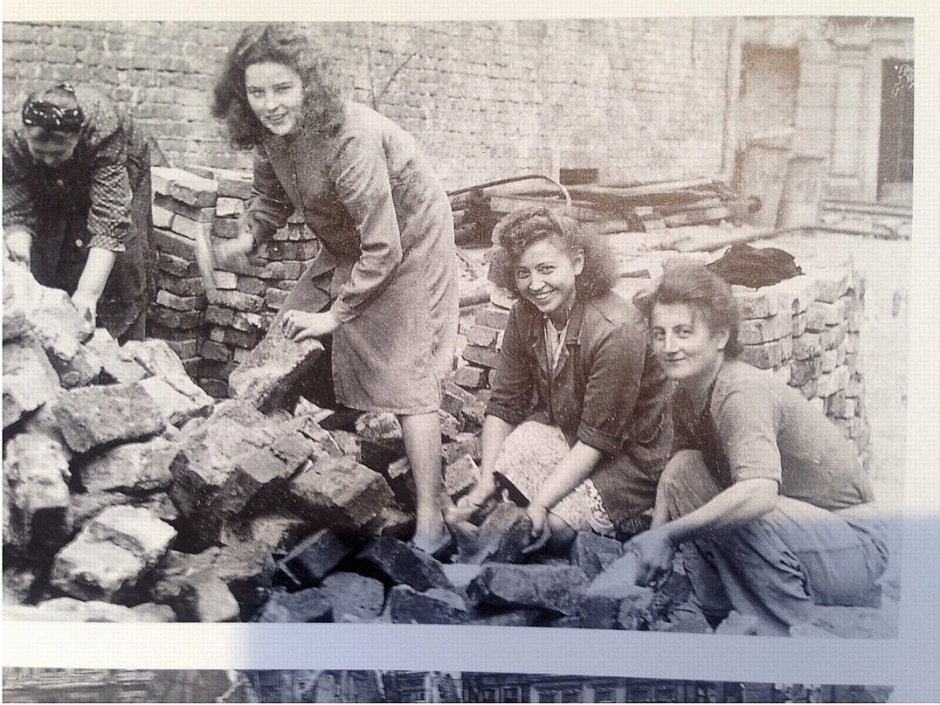
The Trümmerfrau is a German legend, says historian Leonie Treber, created by the authorities through a very successful media campaign where they showed pictures of cheerful Trümmerfrau at work. These images became ingrained in the collective German memory. Rubble-clearing woman became a role model for all women who wanted to train for traditional male jobs, especially in Soviet occupied East Germany. But most Germans in West Germany regarded clearing rubble a punishment.
Women did not play a major role in clearing German cities from the rubble, Treber says. Much of the work was done by men and machines. For example, in a voluntary recruitment drive organized in Duisburg in West Germany in December 1945, 10,550 men volunteered and only 50 women.
The picture was different in Berlin, where women greatly outnumbered men—about 60,000 women volunteered to clear war ruins. But even that amounted to no more than 5 percent of the city’s total female population.
In both East and West Germany, Trümmerfrauen were acknowledged and celebrated by their respective government to create a positive image of women's role in building the new state. Statues were erected to commemorate their work and some of them even received the highest honor of the Bundesverdienstkreuz (Order of merit of the Federal Republic of Germany).


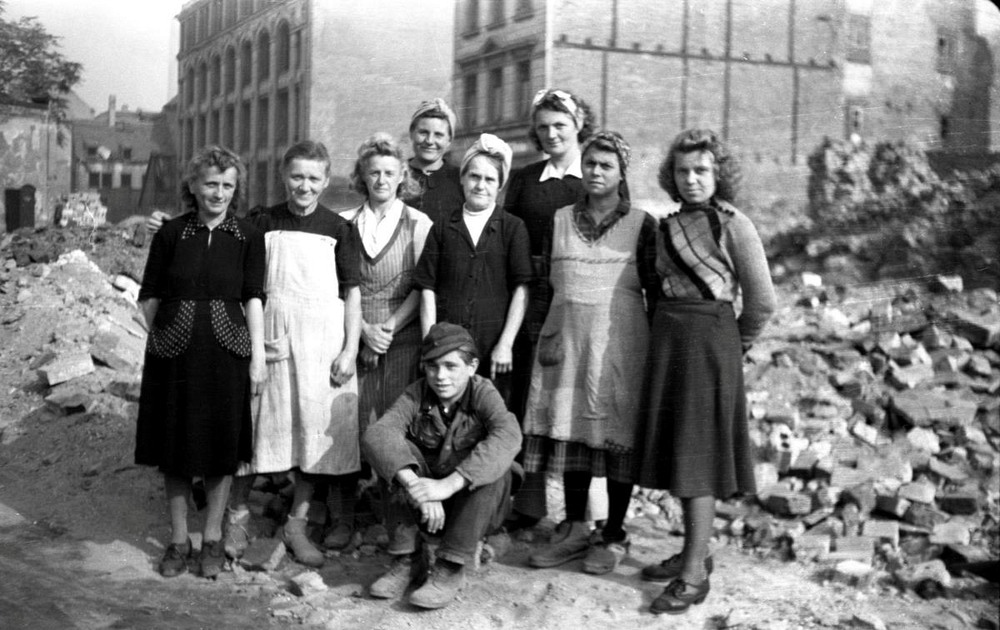
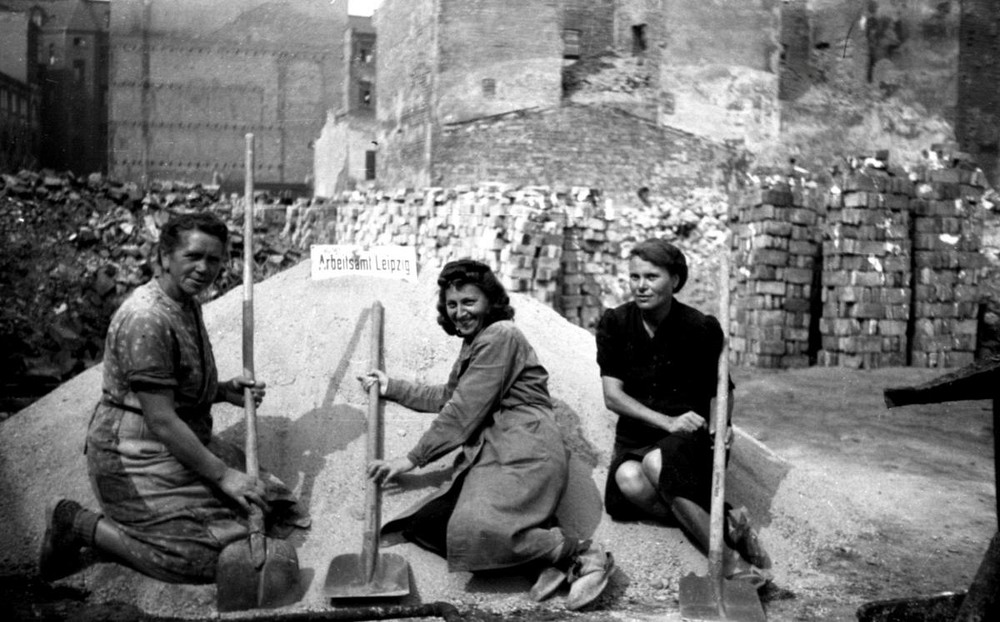
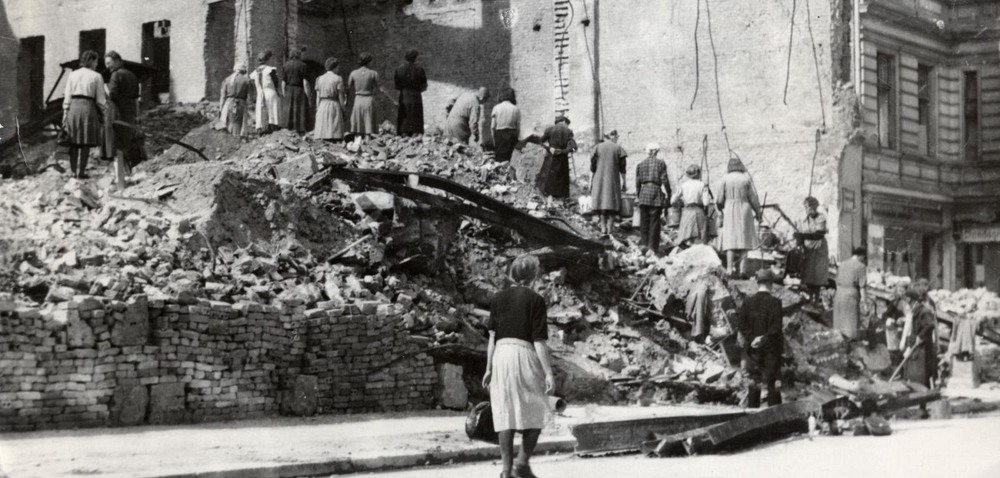
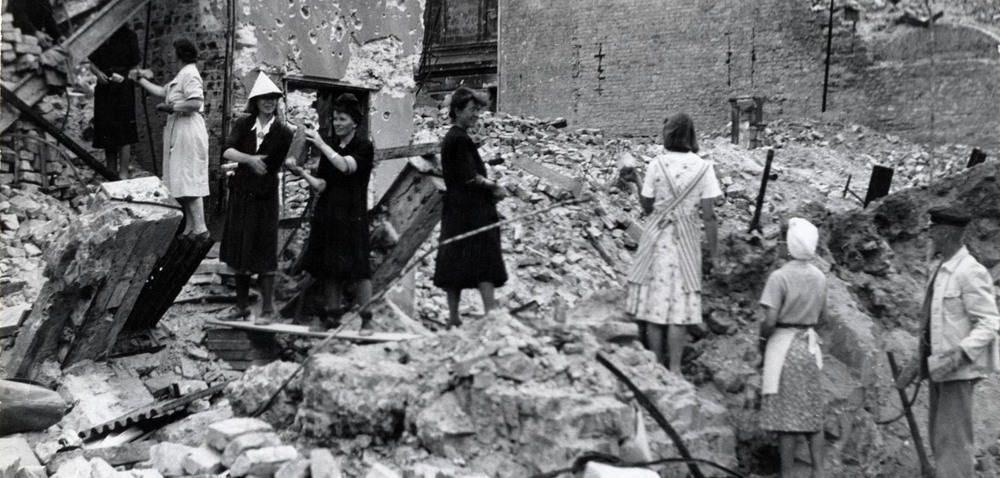
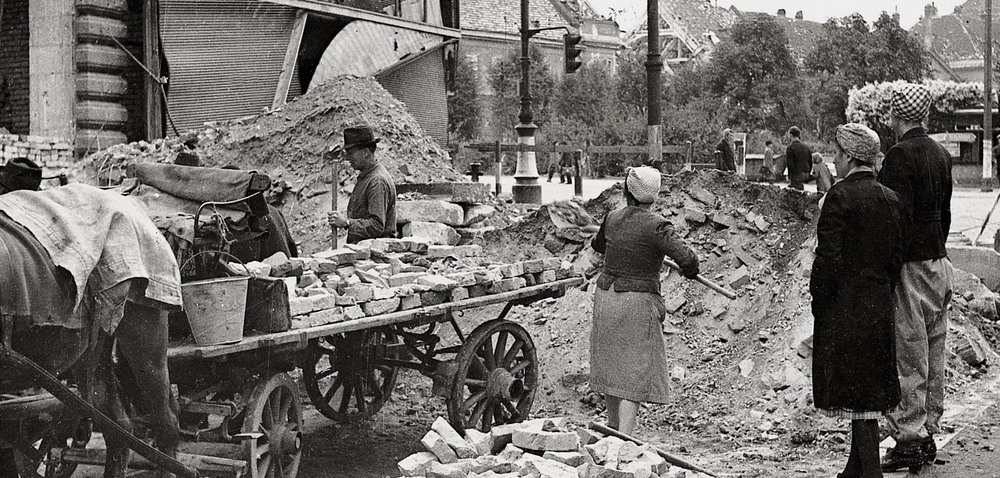

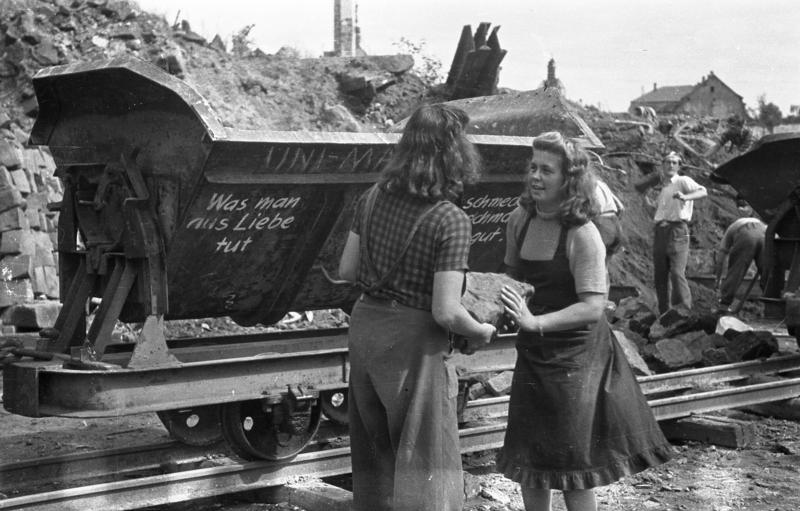



Comments
Post a Comment